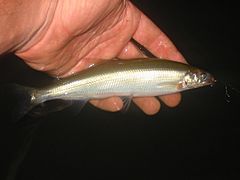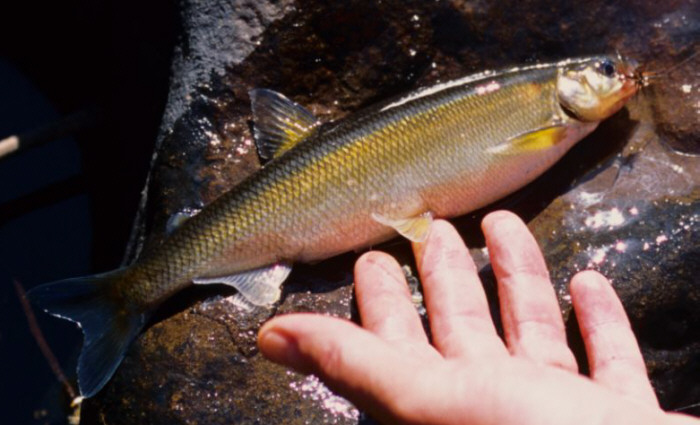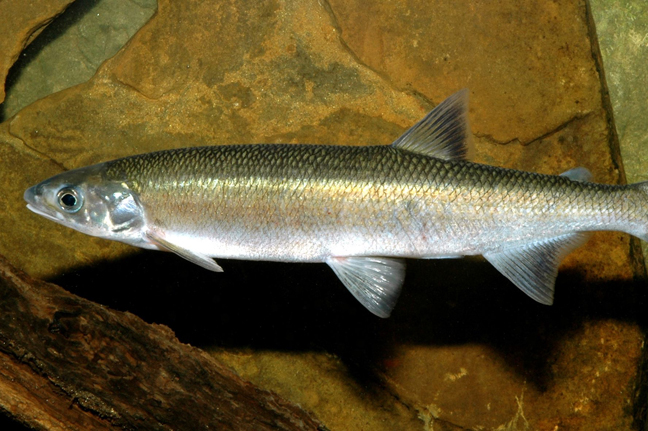Australian Grayling
The Australian grayling (Prototroctes maraena) is a primarily freshwater fish found in coastal rivers in Tasmania and south-easternAustralia. In past decades it has also been known as the “cucumber mullet” or “cucumber herring,” for its cucumber-like odor. The Australian grayling is a streamlined fish with a streamlined, vaguely trout-like shape. Colouration is usually silver on the flanks and dusky olive on the back, overlain with a gold sheen. Australian grayling commonly live for 2–3 years and reach around 20 cm in length, although rare individuals have been recorded up to 5 years in age and 33 cm in length. The fish has an omnivorous diet, feeding upon algae, shrimp, and small insects. Australian grayling spawn in the freshwater reaches of coastal rivers. Spawning is thought to occur in late autumn or early winter. McDowall (1996) reports that egg counts range from 25,000 to 67,000 in females 170–200 mm long, and that the small (~1 mm) demersal eggs probably settle among gravel and cobble in the river bed before hatching. Hatched larvae are washed out to sea. Australian grayling juveniles return to the freshwater reaches of rivers after roughly 6 months at sea and spend the rest of their lives in river habitats.
















No comments:
Post a Comment